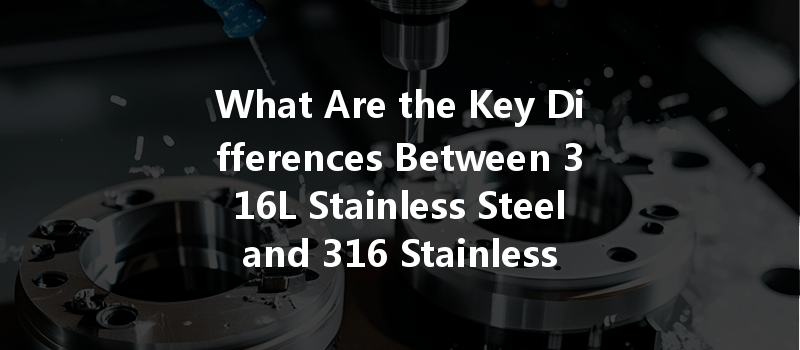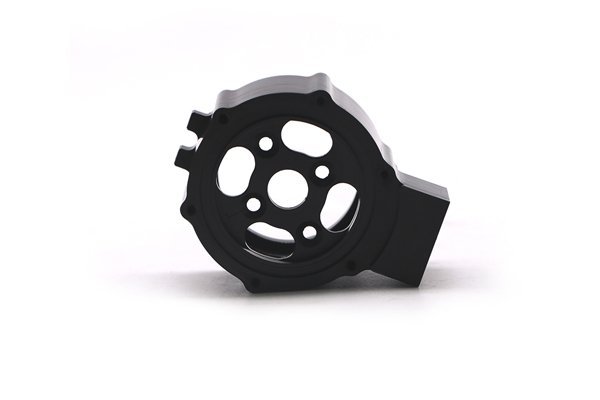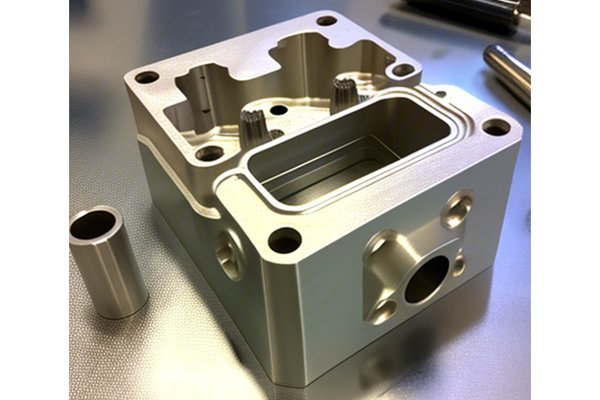Imagine a world where materials evolve, pushing the boundaries of what we can manufacture. In the realm of CNC (Computer Numerical Control) machining, the choice of material is monumental. Did you know that approximately 70% of manufacturers report that material selection is a significant factor influencing overall production efficiency? Among the myriad of materials available, stainless steel is one of the most essential players in industries spanning from aerospace to food processing. Particularly, 316 and 316L stainless steel are two grades that often confuse manufacturers. This blog will explore the critical differences between these two materials and offer detailed insights on how to select and implement them in CNC machining effectively.
Understanding Stainless Steel
Stainless steel is an iron alloy that typically contains chromium (at least 10.5%) to prevent rust. It’s known for its durability, corrosion resistance, and aesthetic appeal. Within the stainless steel family, there are various grades, each designed for specific applications. Among these, the 316 and 316L grades are prominent, especially when it comes to machining.
What is 316 Stainless Steel?
316 stainless steel is a molybdenum-containing austenitic stainless steel that has excellent corrosion resistance. Unlike other stainless steels, it’s particularly resistant to chloride corrosion, making it suitable for environments like coastal areas and chemical processing. In addition to its strong anti-corrosive properties, 316 stainless steel showcases high ductility and strength.
What is 316L Stainless Steel?
316L stainless steel is essentially a low-carbon version of 316 stainless steel. The primary difference lies in its carbon content, which is limited to 0.03% or less in 316L. This reduction in carbon significantly improves the material’s resistance to sensitization, which occurs during welding and high-temperature applications. This quality makes 316L preferable for applications where corrosion resistance and strength are paramount.
Key Differences Between 316 and 316L Stainless Steel
As mentioned, the carbon content is the primary differentiator. While 316 contains carbon levels up to 0.08%, 316L is limited to 0.03% or less. A lower carbon content minimizes the risk of carbide precipitation during welding, which could lead to weakened stainless steel structures.
While both grades offer excellent corrosion resistance, 316L provides better resistance to sensitization, especially after welding. This makes 316L ideal for applications involving elevated temperatures and corrosive environments.
316 stainless steel has higher mechanical properties compared to 316L because of the increased carbon content. However, 316L’s lower yield strength makes it easier to machine, providing a balance between machining efficiency and performance.
316L’s low carbon content makes it a more weldable option compared to
Generally, 316L is more expensive than 316 due to the chemicals required to produce lower carbon levels. Depending on the specific application, however, the cost difference may be justified by its increased stability and longer lifespan in corrosive environments.
CNC Machining Considerations
Both 316 and 316L stainless steels undergo similar machining processes, but there are key considerations when CNC machining these materials.
Machining 316 stainless steel can be more challenging than machining 316L. The latter, with lower carbon content, allows for more favorable cutting speeds, thus improving machining efficiency. For both materials, carbide tools are recommended, with optimized geometry to prevent work-hardening.
Using the right coolant is essential when CNC machining stainless steel. Machining operations generate significant heat, and using a suitable coolant can prolong tool life and enhance surface finish quality. Water-soluble coolants or oil-based fluids are commonly used.
Both grades offer excellent opportunities for surface finishing techniques such as electropolishing or passivation. These processes not only increase the aesthetic quality of the parts but also bolster their corrosion resistance.

Post-processing treatments are vital in maintaining the integrity and performance of the final product designs. For example, the annealing process may be performed primarily for 316 stainless steel to relieve stresses. However, for 316L, this is not generally necessary unless extreme conditions are involved.
It’s crucial to implement robust quality assurance practices during CNC machining to ensure that parts adhere to exact specifications. Non-destructive testing methods like ultrasonic testing and x-ray inspection can help identify problems that could lead to premature failures.
Practical Applications
Both 316 and 316L are frequently used in the scientific and marine fields. For example, laboratory equipment, chemical processing tanks, and boat fittings benefit from the superior corrosion resistance of these grades.
The pharmaceutical industry particularly favors 316L due to its enhanced properties when subjected to sterilization processes. The lower carbon content significantly reduces the risk of corrosion and contamination—critical factors in this sector.
316 stainless steel is commonly utilized in food processing equipment where hygiene and corrosion resistance are vital. Applications include mixers, storage tanks, and piping systems.
In the aerospace and automotive fields, weight, strength, and corrosion resistance are critical. Both grades are used for components that must endure stringent conditions and protect against environmental factors.
Challenges in CNC Machining 316 and 316L Stainless Steel
While the benefits and applications of these two stainless steel grades are significant, there are challenges in machining them within a CNC framework:
Stainless steel is susceptible to work hardening, which can complicate machining operations. If not adequately controlled, it can lead to tool wear and subsequent failures during production.
Handling chip removal effectively is vital for maintaining surface finish quality. The machining environment must be optimized to prevent chip buildup, which can cause tool damage.
Maintaining precise tolerances is crucial; deviations can lead to product failures. Enhanced monitoring during machining will support adherence to specifications.
The abrasive nature of stainless steel can lead to quicker tool wear. Operators should regularly monitor tool condition and replace or sharpen tools when needed.
Navigating the world of CNC machining 316 and 316L stainless steel can be daunting, but understanding their differences is key to optimizing manufacturing processes. From material selection and machining strategies to application relevance, this knowledge lays the groundwork for creating high-quality products that meet industry standards.
Remember, the best choice between 316 and 316L stainless steel depends on the specific demands of your project. The right material ensures longevity, performance, and cost-efficiency in the manufacturing landscape. As companies continue to innovate and adapt, understanding these subtle differences and their implications will enable better decision-making and smoother production flows.
This blog not only delves into the technical aspects but also emphasizes the importance of material knowledge in today’s manufacturing world. In a time when every detail counts, ensuring you use the correct grade of stainless steel can make all the difference in your operations. So the next time you ponder material choices for your CNC machining needs, consider the value that knowledge brings to the table—it could shape the future of your projects!






